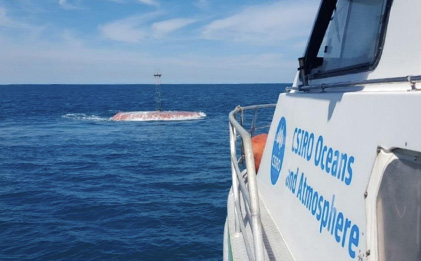Summary
This project has developed an atlas that makes it easier to assess the feasibility of wave power projects.
Overview
The Australian wave energy atlas has built on earlier CSIRO assessments of Australia’s wave energy resources. The project was completed in 2017.
Need
Australia has some of the best wave energy resources in the world. It’s estimated that wave power has the potential to play a large part in Australia’s future energy mix by 2050. To reach that point, three key knowledge gaps were addressed:
- Limited knowledge of the resource, including its temporal and spatial variability and its spectral characteristics
- Difficulty accessing spatial information identifying multiple designated marine management regimes of Australian marine territories
- Limited evidence-base and methodology for assessing impacts of wave energy extraction on the marine and coastal environment.
Learn more
Project innovation
The project delivered two key outputs:
- A searchable, free and publicly available online web atlas of Australia’s national wave energy resource and marine management uses
- Best practice guidelines on physical impact assessments for wave energy developments in Australia’s marine domain.
The online atlas has used data from weather mapping, satellites, measuring stations and a variety of other sources, which have been fed into a complex wave modelling application.
The atlas displays geographic information on marine usage, showing:
- heritage listed areas
- marine parks
- shipping lanes
- port infrastructure
- oil and gas infrastructure and pipelines
- aquaculture.
CSIRO has also established best practice guidelines for assessing the potential impact of wave energy plants on the physical marine and coastal environment based on real project experience. In this project, CSIRO also worked with Carnegie Clean Energy to monitor its Perth Wave Energy Project, off Garden Island in Western Australia. Here, in-water oceanographic sensors were used to monitor the impacts of energy extraction assessed using numerical models.
Benefit
The Australian wave energy atlas provides considerable benefit for an emerging industry by giving new wave power projects a head start when preparing information to obtain the necessary permits and approvals for new proposals.







